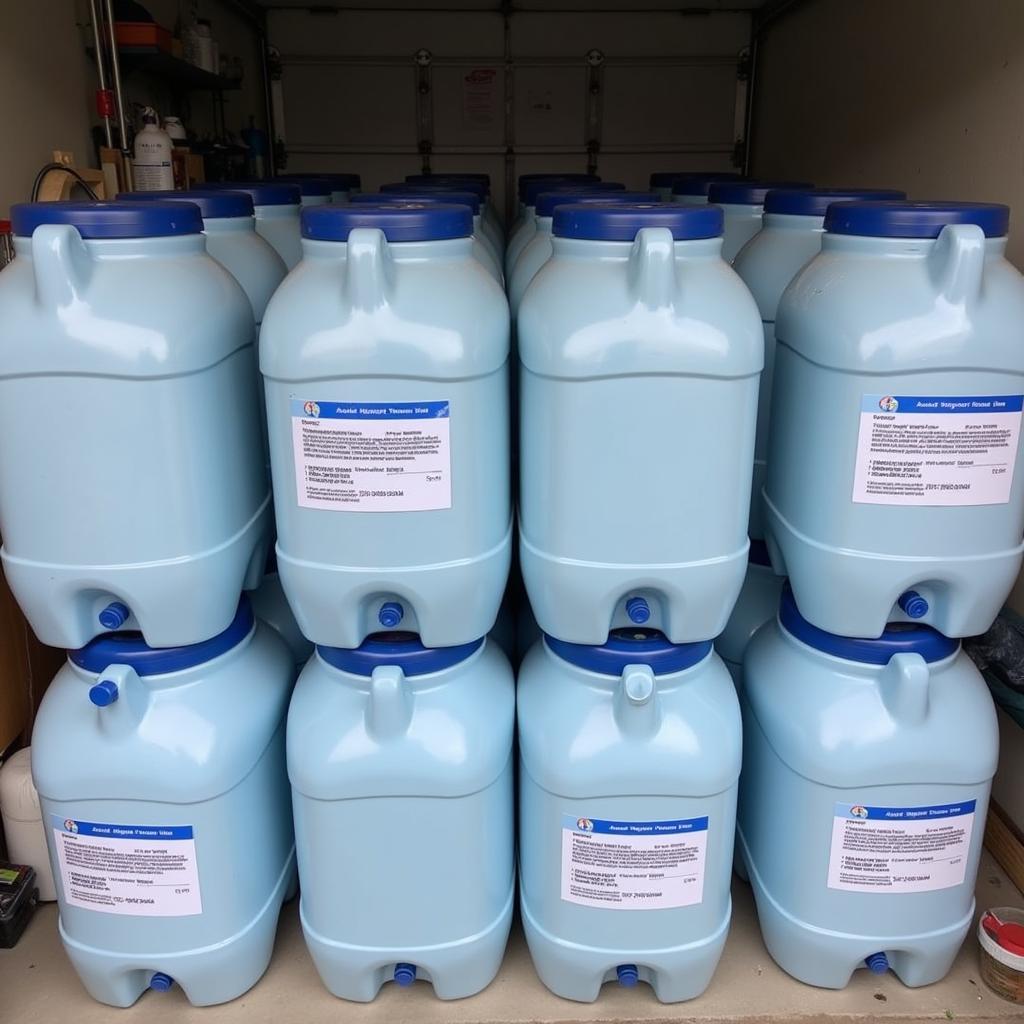Creating a 30-day food supply for a family of four can feel overwhelming, but with careful planning and the right resources, it can be a manageable and rewarding process. This guide will walk you through essential steps, providing valuable insights and practical tips to build a well-rounded emergency food supply that meets your family’s needs. You can find great deals on survival food at best survival food deals.
Planning Your 30-Day Emergency Food Supply
Before diving into specific food items, it’s crucial to assess your family’s dietary needs and preferences. Consider allergies, special diets, and individual tastes to ensure everyone has access to palatable and nutritious food during an emergency. Calculating your caloric needs is another important step. A general guideline is to aim for 2000-2500 calories per adult and 1500-2000 calories per child daily.
Choosing the Right Foods for Long-Term Storage
Opt for shelf-stable options with extended expiration dates. Canned goods, dried fruits and vegetables, grains like rice and beans, and freeze-dried meals are excellent choices. Diversify your supply to ensure a balanced intake of essential nutrients. Don’t forget comfort foods like chocolate or coffee to boost morale during challenging times. Proper storage is key to maintaining food quality. Store your supplies in a cool, dry, and dark place, away from direct sunlight and extreme temperatures. Consider investing in airtight containers to protect against pests and moisture.
“Properly stored food can last much longer than you might think. Rotating your stock regularly ensures you always have fresh and readily available supplies in case of an emergency,” advises registered dietitian, Sarah Miller, RDN.
Building Your 30-Day Food Supply List
Creating a detailed list helps you stay organized and ensures you have enough food for everyone. Categorize your list by food groups: proteins, carbohydrates, fruits, vegetables, dairy, and fats. Include specific quantities for each item, considering your family’s consumption habits.
Sample 30-Day Food Supply List for a Family of 4
- Proteins: Canned tuna (24 cans), canned chicken (12 cans), dried beans (10 lbs), lentils (5 lbs)
- Carbohydrates: Rice (20 lbs), pasta (10 lbs), oatmeal (5 lbs), crackers (2 boxes)
- Fruits: Dried fruit (5 lbs), canned fruit (12 cans)
- Vegetables: Canned vegetables (24 cans), dried vegetables (5 lbs)
- Dairy: Powdered milk (5 lbs), shelf-stable milk (12 cartons)
- Fats: Cooking oil (2 gallons), nuts and seeds (2 lbs)
You can find a convenient 30 day food supply online. Remember to customize this list based on your family’s needs and preferences. Consider adding survival bucket food to your stockpile for long-term emergencies.
Water and Other Essential Supplies
While food is crucial, don’t overlook the importance of water. Store at least one gallon of water per person per day for drinking and sanitation. Consider water purification tablets or a water filter as a backup. Include essential non-food items like a first-aid kit, sanitation supplies, and cooking tools in your emergency preparedness plan.
How much water should I store?
Store a minimum of one gallon per person per day.
“Having access to safe drinking water is paramount in any emergency situation. Water is essential for hydration, cooking, and hygiene,” emphasizes Dr. David Lee, a wilderness medicine expert.
 Water storage containers for emergency preparedness
Water storage containers for emergency preparedness
Maintaining and Rotating Your 30-Day Food Supply
Regularly check expiration dates and rotate your stock using the FIFO (First In, First Out) method. This means consuming the oldest items first and replacing them with newer ones. This practice prevents food waste and ensures your supply remains fresh and readily available when needed. Consider practicing using your emergency food supplies occasionally to familiarize yourself with the preparation methods and ensure your family enjoys the chosen foods. If you’re interested in learning more about foraging, check out this resource on food from trees. You can also find the best place to buy freeze dried food online for lightweight, long-lasting options.
Conclusion
Building a 30-day food supply for a family of four requires planning, but it’s a vital step in ensuring your family’s well-being during unforeseen circumstances. By following the steps outlined in this guide, you can create a comprehensive and nutritious emergency food supply that provides peace of mind.
FAQ
- What is the shelf life of canned goods?
- How should I store dried foods?
- What are the best water purification methods?
- How often should I rotate my food supply?
- What other essential supplies should I include in my emergency kit?
- How can I make emergency food more palatable?
- Where can I find affordable emergency food supplies?
Example Scenarios
- Scenario 1: A severe winter storm knocks out power and access to grocery stores for a week.
- Scenario 2: A natural disaster like a hurricane or earthquake disrupts supply chains and makes it difficult to find fresh food.
- Scenario 3: A job loss or unexpected financial hardship limits your ability to purchase groceries regularly.
Further Reading
- Emergency Preparedness for Families
- Creating a Disaster Supply Kit
- Food Safety Guidelines
For further assistance, please contact us at Phone Number: 02437655121, Email: minacones@gmail.com Or visit us at: 3PGH+8R9, ĐT70A, thôn Trung, Bắc Từ Liêm, Hà Nội, Việt Nam. We have a 24/7 customer support team.